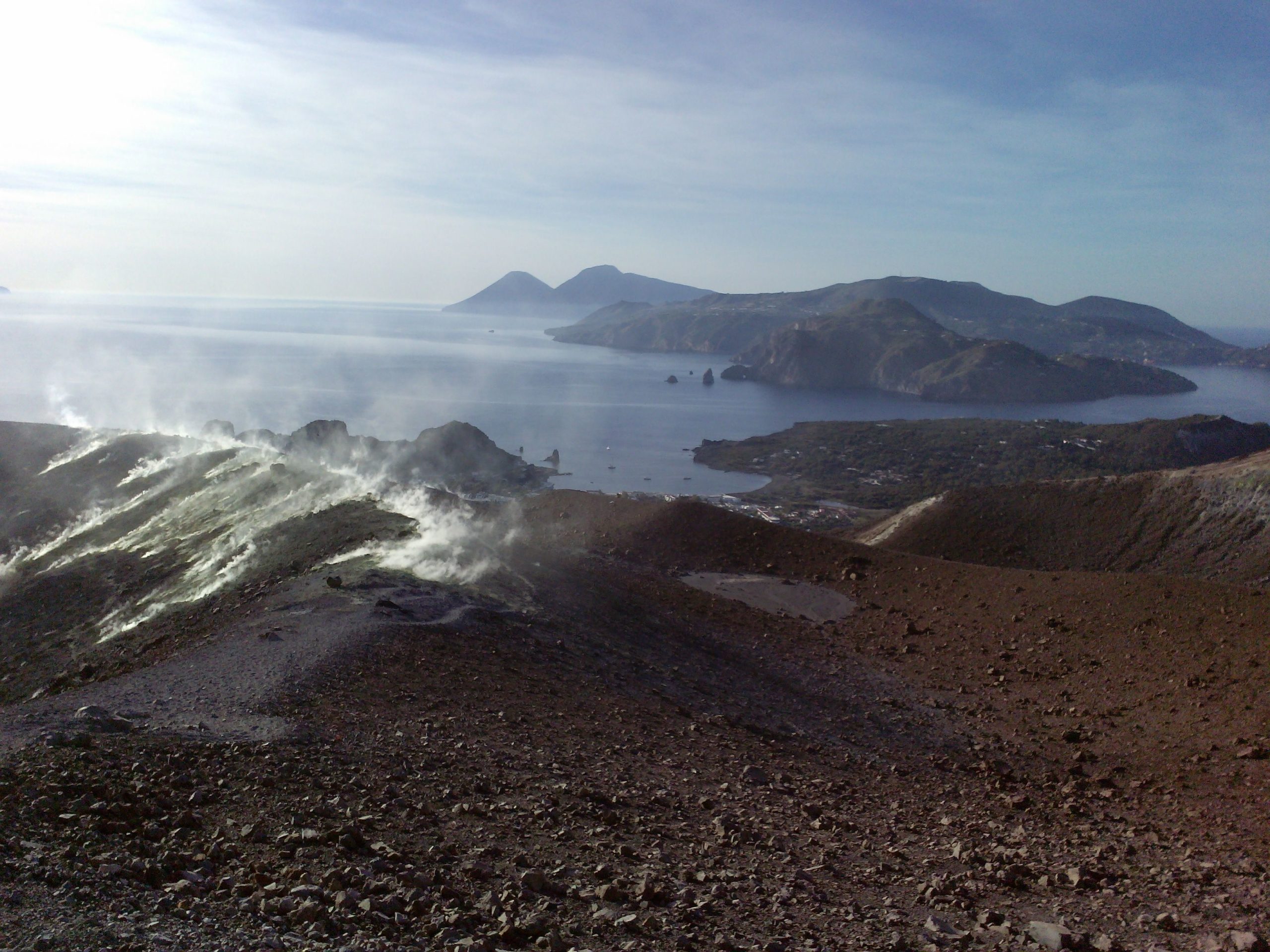
March 17 , 2022 .
Italy , Vulcano :
WEEKLY NEWSLETTER, from March 07, 2022 to March 13, 2022. (issue date March 15, 2022)
SUMMARY OF STATUS OF ACTIVITY
In the light of the surveillance data, it is highlighted:
1) Temperature of the crater fumaroles: The updated data of the temperatures recorded on the edge of the crater show stable values and confirm the continuation of the thermal anomaly. On the internal side the values are always stable at 114°C.
2) CO2 flux in the crater area: The CO2 flux in the crater area remains at high values.
3) SO2 flux in the crater area: SO2 flux at a medium-high level and decreasing
4) Geochemistry of fumarolic gases: The concentrations of magmatic species (CO2, He) are decreasing and are at medium-high levels.
5) CO2 fluxes at the base of the La Fossa cone and in the Vulcano Porto area: The CO2 fluxes recorded in the Rimessa, C. Sicilia and P4max sites remain at medium-high values; in the Faraglione site, there are values close to the background level.
6) Geochemistry of thermal aquifers: The physico-chemical parameters recorded in the wells of Camping Sicilia and Bambara do not show significant variations, remaining stable at high values.
7) Local seismicity: low occurrence rate of local events.
8) Regional seismicity: No earthquake with Ml >= 1.0 was located in the area of the island of Vulcano.
9) Deformations – GNSS: The network of permanent GNSS stations has not recorded any significant changes.
10) Deformations – Inclinometry: The inclinometric network has not recorded any significant changes
11) Other observations: Gravimetry: During the period considered, no significant variation was recorded.
GB-RAR: GB-RAR monitoring results referring to the period December 14, 2021 – March 14, 2022, show general stability of the area, with deformations along the LOS of less than 1 mm.
Mobile GNSS: Mobile GNSS stations do not appear to show significant changes over the reporting period.
CRATER FUMAROLLES TEMPERATURE .
The reference sensor for the maximum temperature showed a weekly average of 385°C, with the maximum recorded value of 387°C. Locally, the sensor placed in the fumarole of the internal slope did not exceed 114.2°C, suggesting the presence of a liquid phase and a flow influenced by exogenous conditions.
CO2 FLOW IN THE CRATER AREA
The CO2 flux values on the ground in the summit zone on a daily average (VCSCS) show high values around 13,600 g/m2/day (value of March 13, 2022), still on an order of magnitude higher than the averages recorded in over the past 10 years.
The average value of the CO2 flux (monthly average) in March 2022 is 11055 g/m2/day. A stabilization of degassing at high values is therefore observed on a monthly scale. Data is updated as of March 13, 2022.
Source : INGV.
Photos : INGV , G Vitton.
Saint Vincent , Soufrière Saint Vincent :
VOLCANO ALERT LEVEL IS LOWERED FROM YELLOW TO GREEN
The government of Saint Vincent and the Grenadines, on the advice of scientists at the University of the West Indies Seismic Research Center, has made the decision to lower the volcanic alert level from yellow to green, effective 16 March 2022. A GREEN alert means that the seismic and fumarolic activity (steam emission) of the La Soufrière volcano is at or below historic levels. No other unusual activity was observed.
The activity of the La Soufrière volcano is now considered to be at levels similar to the background activity recorded before the 2020-2021 eruption. The general downward trend in seismicity has continued over the past month.
The alert level was previously lowered from orange to yellow on September 15, 2021 and since then activities have either significantly decreased or ceased.
The La Soufrière trail remains closed due to uneven and dangerous terrain. The National Emergency Management Organization reminds the public of the potential threat to lahars (flood waters mixed with ash, other volcanic materials, mud, debris and rocks) after rainfall and the threat to people living and moving in the river valleys closest to the volcano.
Residents and motorists in areas near the volcano and people crossing rivers and streams during periods of heavy rainfall should always remain vigilant.
Japan , Asosan :
JMA reported that the amplitude of volcanic tremor signals at Asosan had decreased at around 1540 on 27 February and remained low. White plumes rose 600-800 m above the crater during 7-14 March. During field surveys conducted on 8 and 10 March sulfur dioxide gas emissions were 1,300 and 900 tons per day, respectively; these values were higher than those measured before the October 2021 eruption. No other changes were observed. JMA lowered the Alert Level to 2 (on a scale of 1-5) on 14 March and warned the public to stay at least 1 km away from the crater.
The 24-km-wide Asosan caldera was formed during four major explosive eruptions from 300,000 to 90,000 years ago. These produced voluminous pyroclastic flows that covered much of Kyushu. The last of these, the Aso-4 eruption, produced more than 600 km3 of airfall tephra and pyroclastic-flow deposits. A group of 17 central cones was constructed in the middle of the caldera, one of which, Nakadake, is one of Japan’s most active volcanoes. It was the location of Japan’s first documented historical eruption in 553 CE. The Nakadake complex has remained active throughout the Holocene. Several other cones have been active during the Holocene, including the Kometsuka scoria cone as recently as about 210 CE. Historical eruptions have largely consisted of basaltic to basaltic-andesite ash emission with periodic strombolian and phreatomagmatic activity. The summit crater of Nakadake is accessible by toll road and cable car, and is one of Kyushu’s most popular tourist destinations.
Sources : Agence météorologique japonaise (JMA) , GVP .
Photo : Nakadake , GVP.
Colombia , Cumbal :
Cumbal Volcanic Complex Weekly Activity Bulletin
The activity of the Cumbal Volcanic Complex continues at: YELLOW LEVEL (III): CHANGES IN THE BEHAVIOR OF VOLCANIC ACTIVITY.
From monitoring the activity of the CUMBAL VOLCANIC COMPLEX (CVC), the COLOMBIAN GEOLOGICAL SERVICE (SGC) reports that:
In low levels and compared to the previous week, during the period between March 8 and March 14, 2022, an increase in the number of earthquakes and a decrease in the energy released were observed. Most of the earthquakes were of low energy, being located mainly southeast of La Plazuela crater at distances between 1.5 and 3 km with depths less than 1 km.
A few other earthquakes were scattered in the area of influence of the Cumbal Volcanic Complex, at distances of up to 13 km, at depths less than 14 km from the height of La Plazuela (4700 m above sea level). altitude) and with a maximum local magnitude of 1.0.
The favorable climatic conditions allowed the recording of the surface activity throughout the week evaluated, with columns of white gases, of low height and variable dispersion due to the action of the winds, emitted from the adventitious crater El Verde, northeast of the Cumbal Volcanic Complex and Los Rastrojos, Boca Vieja and other fumarolic fields of the active Mundo Nuevo cone southwest of the Cumbal Volcanic Complex. No significant variation was observed in the other geophysical and geochemical parameters of volcanic monitoring.
Ecuador , Wolf / Sangay :
DAILY REPORT OF THE STATE OF WOLF VOLCANO. Wednesday March 16, 2022.
Surface Activity Level: High, Surface Trend: Unchanged
Internal activity level: High, Internal trend: No change
Seismicity: From March 15, 2022, 11:00 a.m. to March 16, 2022, 11:00 a.m.:
No seismic event has been recorded at the volcano in the past 24 hours.
Other Monitoring Parameters:
The FIRMS system recorded 81 thermal anomalies; Similarly, the MIROVA system recorded 2 strong thermal anomalies (1743 and 1373 MW) and 1 high (124 MW) during the last 24 hours.
Gas:
The MOUNTS system recorded 0.1 tons of SO2, on March 14 at 7:10 p.m. TL.
Observation:
Thanks to the images provided by the GOES-16 satellite, thermal anomalies can be observed due to the effect of advancing lava flows.
Alert level: Without alert.
———————————————————————————————————————————————–
DAILY REPORT OF THE STATE OF SANGAY VOLCANO, Wednesday March 16, 2022.
Information Geophysical Institute – EPN.
Surface Activity Level: High, Surface Trend: No change.
Internal activity level: High, Internal trend: No change.
Seismicity: From March 15, 2022, 11:00 a.m. to March 16, 2022, 11:00 a.m.:
Explosion (EXP) 12
Long Periods (LP) 1
Emission Tremors (TREMI) 21
Rains / Lahars:
Thanks to the Windy satellite system, it was possible to verify the possible occurrence of rains in the volcano area. **In the event of heavy rains, these could remobilize the accumulated materials, generating mudslides and debris that would descend on the flanks of the volcano and flow into the adjacent rivers.**
Emission / ash column:
Yesterday afternoon, it was possible to observe a gas emission with a weak ash load, at 1 km altitude above the crater and heading towards the South-East. This morning, the Washington VAAC issued 2 reports of ash emission 870 meters above crater level and in a southwesterly direction.
Gas:
The MOUNTS system recorded 1462 tons of SO2 (March 15 at 2:05 p.m. TL).
Other Monitoring Parameters:
The FIRMS system recorded 31 thermal anomalies; the MIROVA system recorded 1 high thermal anomaly (193 MW) in the last 24 hours.
Alert level: Orange.
Source : IGEPN.
Photos : IGEPN
La Palma , Cumbre Vieja :
Post-eruption activity at Cumbre Vieja, La Palma, March 16, 2022, 09:00 UTC.
In the last 7 days, since the last communication (March 8 at 9:00 UTC), 27 earthquakes have been located on the island of La Palma. The magnitudes are between 0.9 and 2.3 (mbLg). Two of these earthquakes were weakly felt by the population, with a maximum intensity of II (EMS98). The location of hypocenters continues below the central area of Cumbre Vieja, in the same areas as in previous weeks, at depths between 0 and 16 km. No earthquake was located at greater depth.
The network of permanent GNSS stations on the island does not show significant deformations that could be associated with volcanic activity.
Seeing the earthquakes, I have a terrible suspicion that another magma reservoir is forming 7-8 km away. Something is happening there, just below the lava flow area between Tazacorte and Puerto Naos, and it shows that the earthquakes are positioned forming a circle. If I’m right, it won’t take long to pressurize and give more intense seismicity.
The truth is that the deformation to the East (LP05, MAZO and LP05) and South (LP04) of the island is increasing, indicating swelling, due to the contribution of magma at deep levels … the system there seems like he’s balancing himself out and getting ready for his reboot he hasn’t reached yet.
This is how it was described to me today what was perceptible in an area in the North of the Island: « A lot of wobble, up and down, very very strong and shocks, strong too. This will be balancing, I’m not saying no, … but it’s very strong Enrique.
And if we look at the release of the accumulated seismic energy released, we see the rebound from a few days ago and then how the system has relaxed…. we will see if it continues to relax in the next a few days or as it seems from the last symptoms that we have a new rebound. The volcano will tell us.
Sources : IGN es, Volcanes y Ciencia Hoy ( Henrique) .
Photo : I love the world.
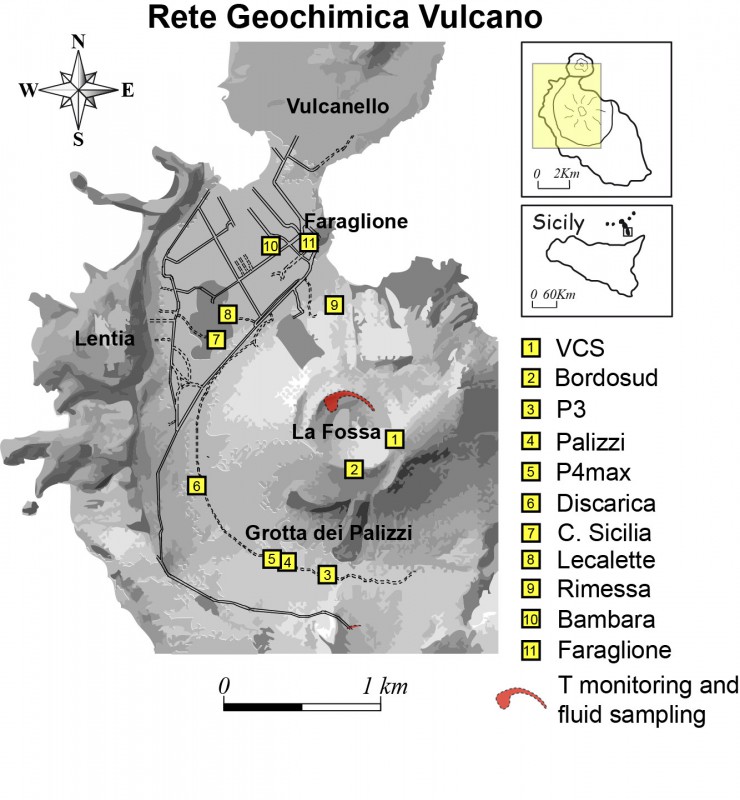
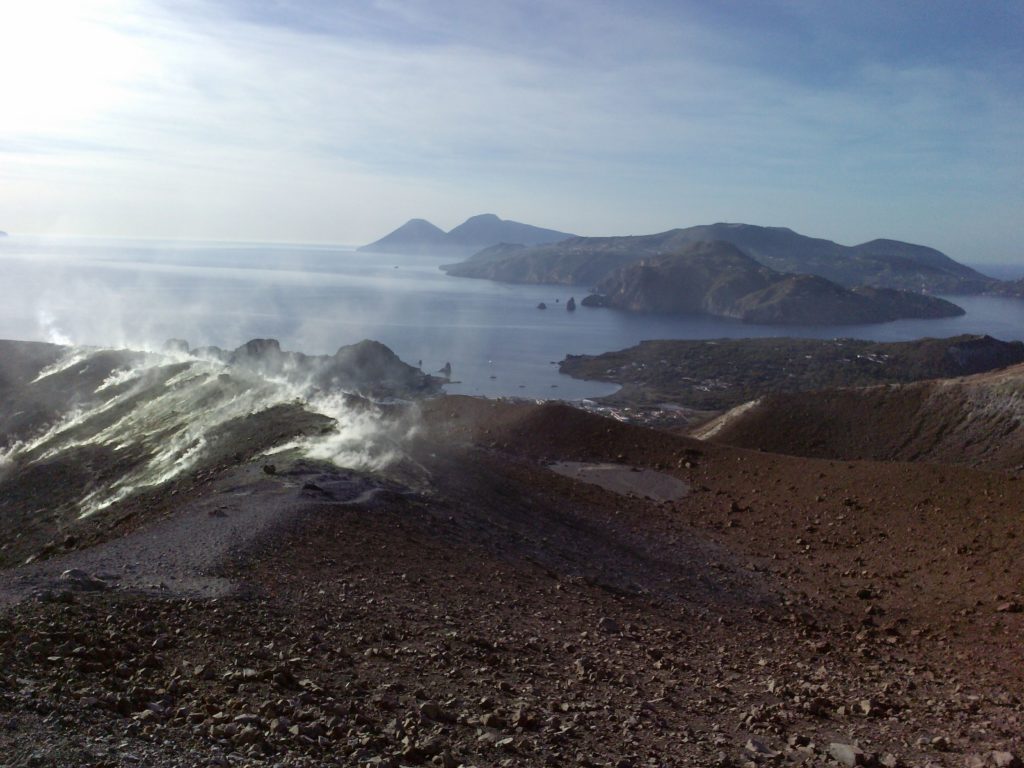
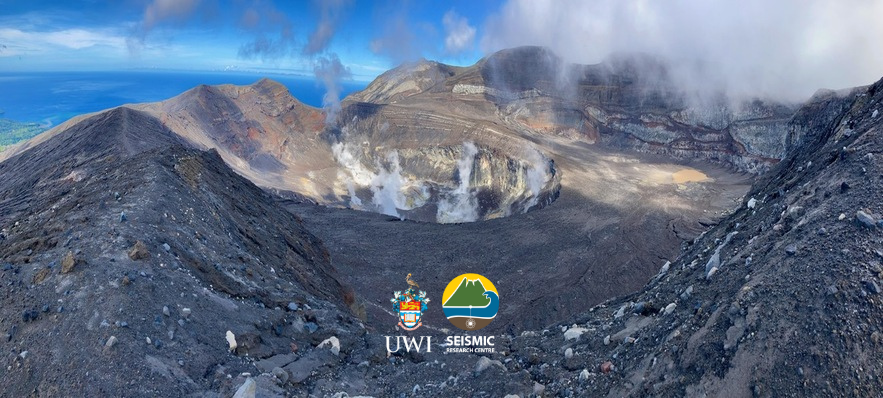

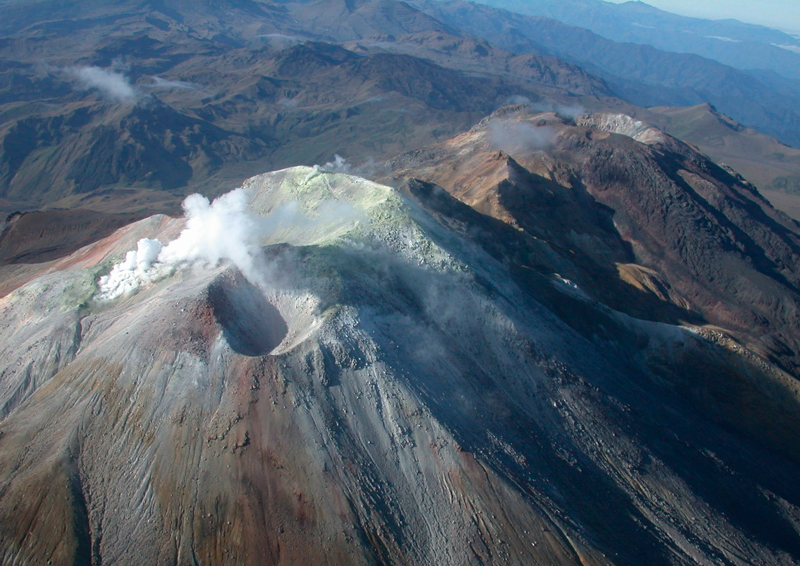
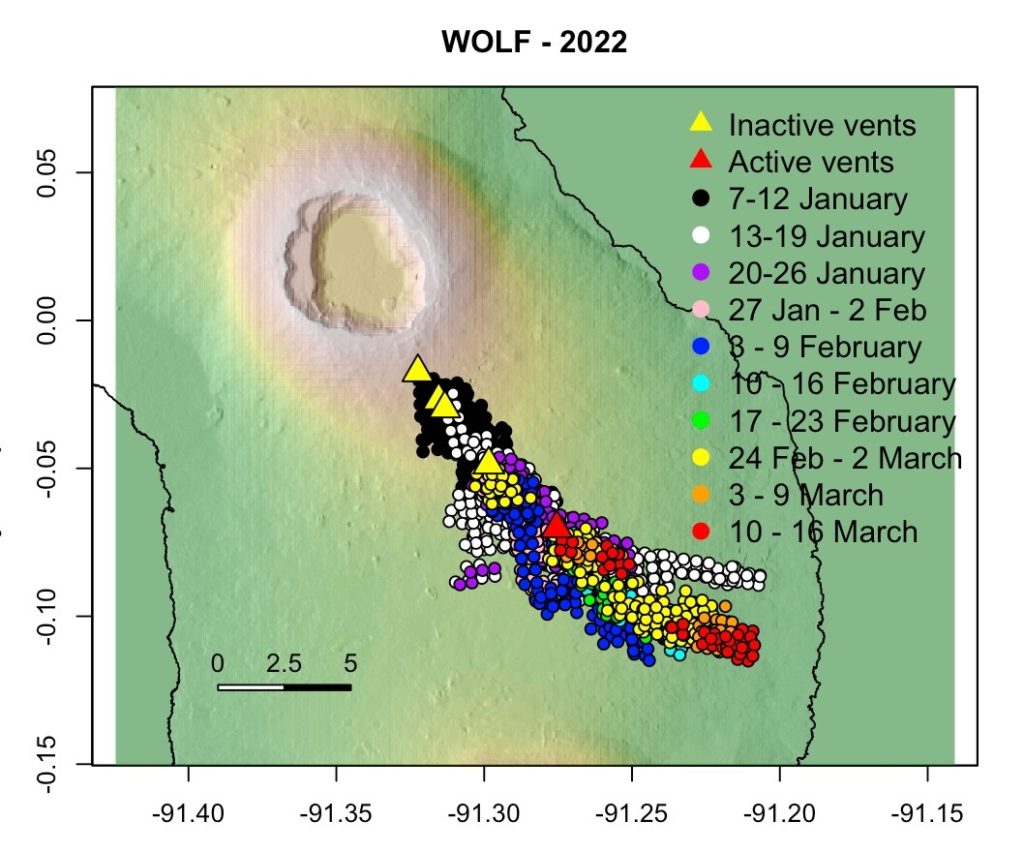

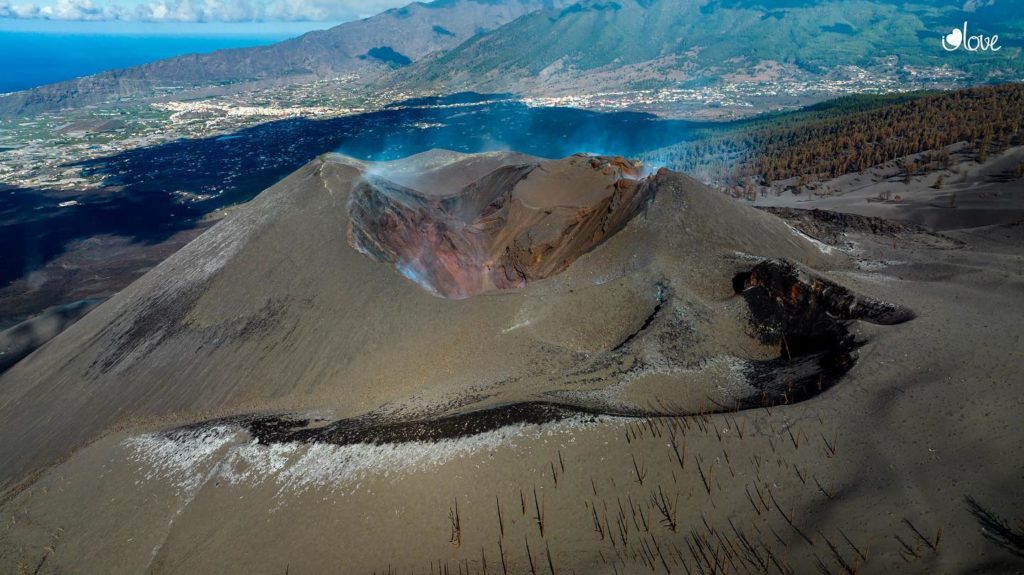
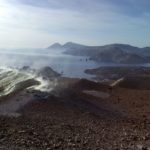
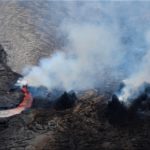


No comment yet, add your voice below!